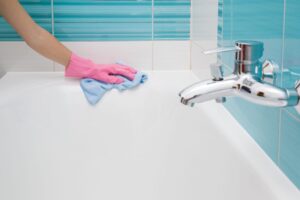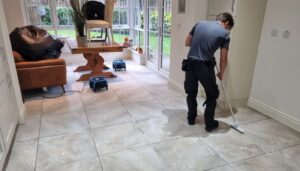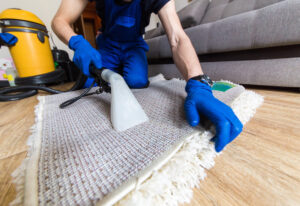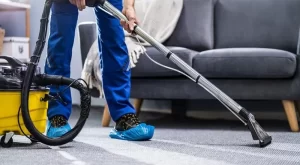How to Deep Clean Your Bathroom Tile: Step-by-Step Instructions
Keeping your bathroom tiles clean is essential for maintaining a fresh and hygienic space. Over time, grime, soap scum, and mildew can build up, making your tiles look dull and uninviting. A deep clean not only restores their shine but also prevents mold and bacteria growth. With the right techniques and cleaning solutions, you can achieve sparkling clean tiles without much hassle.
Preparing for the Cleaning Process
 Before getting started, it’s important to gather all the necessary supplies. Using the right cleaning materials can make the process more efficient and effective. A good cleaning solution, whether store-bought or homemade, will help break down stubborn grime. A scrub brush with stiff bristles or an old toothbrush will help reach tight corners and grout lines. Having a bucket of warm water, a mop, and a few microfiber cloths on hand will also make rinsing and drying easier.
Before getting started, it’s important to gather all the necessary supplies. Using the right cleaning materials can make the process more efficient and effective. A good cleaning solution, whether store-bought or homemade, will help break down stubborn grime. A scrub brush with stiff bristles or an old toothbrush will help reach tight corners and grout lines. Having a bucket of warm water, a mop, and a few microfiber cloths on hand will also make rinsing and drying easier.
Proper ventilation is also key. Opening windows or turning on the bathroom fan will help circulate fresh air and prevent excessive moisture buildup during cleaning.
Removing Surface Dirt and Dust
The first step in deep cleaning bathroom tiles is removing any loose debris. Sweeping or vacuuming the floor ensures that dust and hair do not interfere with the cleaning solution. A dry microfiber cloth can be used to wipe down wall tiles before applying any cleaning agents.
Rinsing the tiles with warm water before applying a cleaner can also loosen some dirt and make the scrubbing process easier. This step is particularly useful for bathroom floors, as it helps remove any dried-on residues.
Choosing the Right Cleaning Solution
Different types of tile require different cleaning solutions. Ceramic and porcelain tiles are durable and can handle stronger cleaners, while natural stone tiles like marble or travertine require gentler, pH-neutral products to avoid damage.
A homemade solution of equal parts white vinegar and water works well for many tile types, helping to dissolve soap scum and disinfect surfaces. Baking soda can also be used as a mild abrasive to tackle tough stains. For commercial cleaners, choosing one specifically designed for your tile type will ensure the best results.
Scrubbing the Tile Surfaces
Once the cleaner is applied, allowing it to sit for a few minutes will help loosen dirt and grime. Using a scrub brush or sponge, working in small circular motions ensures an even clean. For heavily stained areas, extra scrubbing may be needed.
Wall tiles and shower tile can be tackled from top to bottom to prevent dirty water from dripping onto clean areas. Floor tiles should be scrubbed thoroughly, especially in high-traffic spots where buildup is common.
Deep Cleaning the Grout
One of the most challenging parts of bathroom tile cleaning is dealing with grout. Because grout is porous, it absorbs dirt and moisture, making it prone to discoloration and mildew. A paste made from baking soda and water can be applied to grout lines and left to sit for several minutes before scrubbing with a toothbrush or grout brush.
For more stubborn stains, a small amount of hydrogen peroxide can be added to the baking soda paste for extra whitening power. Avoid using harsh chemicals like bleach on colored grout, as they may cause fading.
Rinsing thoroughly after scrubbing prevents any residue from drying on the tiles, which can lead to streaks or dull spots.

Drying and Polishing the Tiles
After deep cleaning, drying the tiles is just as important as scrubbing them. Excess moisture can lead to streaking and water spots, so using a dry microfiber cloth or towel to wipe down surfaces ensures a polished finish.
For extra shine, a small amount of rubbing alcohol or a tile polish can be applied with a clean cloth. This step helps protect the tiles and makes them more resistant to future buildup.
Preventing Future Buildup
Maintaining clean tiles is easier when a regular cleaning routine is in place. Wiping down shower walls and floors after each use helps prevent soap scum from accumulating. Using a daily shower spray or a mix of water and vinegar can also keep surfaces looking fresh.
Sealing grout every few months adds a protective barrier against moisture and stains, reducing the need for frequent deep cleaning. Keeping the bathroom well-ventilated also helps prevent mold and mildew growth.

 Neglecting tile maintenance can lead to serious issues such as cracks, chips, and stubborn grout stains that become nearly impossible to remove. If left untreated, damaged tiles may require expensive repairs or complete replacement. Professional tile cleaning helps prevent such damage by keeping surfaces in optimal condition. Expert cleaners identify problem areas early on and apply protective sealants to grout lines, reducing the chances of future deterioration. Homeowners can save money in the long run by extending the life of their existing tiles instead of investing in new flooring.
Neglecting tile maintenance can lead to serious issues such as cracks, chips, and stubborn grout stains that become nearly impossible to remove. If left untreated, damaged tiles may require expensive repairs or complete replacement. Professional tile cleaning helps prevent such damage by keeping surfaces in optimal condition. Expert cleaners identify problem areas early on and apply protective sealants to grout lines, reducing the chances of future deterioration. Homeowners can save money in the long run by extending the life of their existing tiles instead of investing in new flooring. Steam cleaning, also known as hot water extraction, is one of the most popular and widely recommended carpet cleaning methods. This process involves spraying hot water mixed with a cleaning solution deep into the carpet fibers and then extracting the dirt and moisture using a powerful vacuum. This method effectively removes deep-seated dirt, allergens, and bacteria, making it ideal for households with pets, children, or individuals with allergies.
Steam cleaning, also known as hot water extraction, is one of the most popular and widely recommended carpet cleaning methods. This process involves spraying hot water mixed with a cleaning solution deep into the carpet fibers and then extracting the dirt and moisture using a powerful vacuum. This method effectively removes deep-seated dirt, allergens, and bacteria, making it ideal for households with pets, children, or individuals with allergies. Encapsulation is a modern and eco-friendly carpet cleaning technique that uses a special polymer-based cleaning solution. The solution is applied to the carpet, where it encapsulates dirt particles and crystallizes as it dries. Once the cleaning solution has dried completely, the carpet is vacuumed to remove the encapsulated dirt and residue.
Encapsulation is a modern and eco-friendly carpet cleaning technique that uses a special polymer-based cleaning solution. The solution is applied to the carpet, where it encapsulates dirt particles and crystallizes as it dries. Once the cleaning solution has dried completely, the carpet is vacuumed to remove the encapsulated dirt and residue.